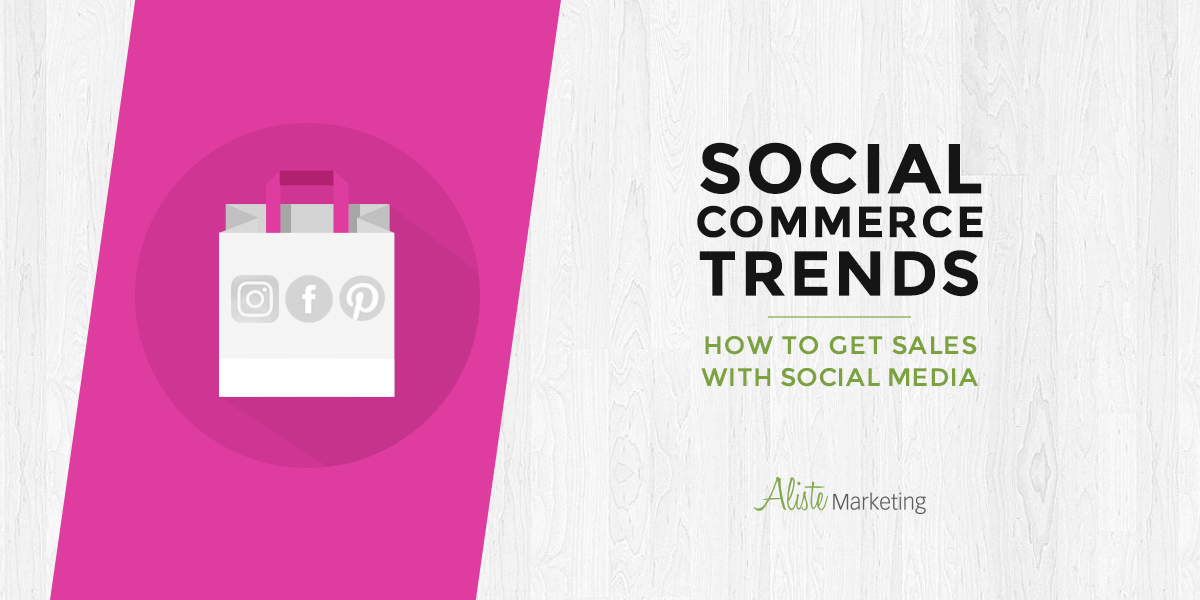Before I can dig into social commerce trends, I want to nail down a realistic definition for you.
Because, exactly what is social commerce?
If you google the phrase, you’ll find a number of lengthy definitions chock full of marketing-speak.
Our simple social commerce definition:
Social commerce takes place when revenue is generated through a social media channel.
The key piece of every social commerce definition that Google turns up is the revenue generation part, aka sales.
Ahhh, sales.
Global social commerce revenue surpassed $30 billion in 2016.
It’s a huge chunk of purchasing power, right?
Check out these other social commerce stats: 
[clickToTweet tweet=”Did you know: global social commerce revenue surpassed $30 billion in 2016! #smm #ecommerce” quote=”Did you know: global social commerce revenue surpassed $30 billion in 2016!”]
In the past years, social media’s role was once only brand building and customer engagement. It has now become a force to be reckoned with when it comes to driving retail all on its own.
As online sales continue to skyrocket, the sales landscape has visibly changed.
Now more than ever, sales are occurring directly through social media marketing.
How’s that for a new addition to your key business performance metrics?
For a long time, the question on every digital marketer’s mind has been “How do I get sales with social media?”.
In 2017, we have the answers, and we even have terminology to describe the revenue stream itself.
Enter the phrase “social commerce”.
(Or “social ecommerce”, depending on your preference.)
Let’s talk more about how brands, companies, and customers are benefitting from using these social commerce trends.
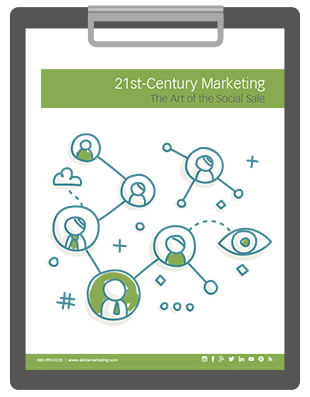
BONUS: Learn how to use social media for converting leads to sales with the art of social commerce. Download Our Guide Now!
Major Social Commerce Examples
When it comes to social commerce trends, there are quite a few types. There are big players in the social commerce game and many smaller platforms, too.
I’m going to focus on the big three to include in your marketing planning process:
Each of these big platforms have a few different ways to maximize social commerce.
I’ll show you how, with the following social commerce examples.
Facebook Social Commerce Trends
Perhaps the easiest way to generate sales on Facebook is through its Shop feature.
Facebook’s Shop Tab is a little store in itself.
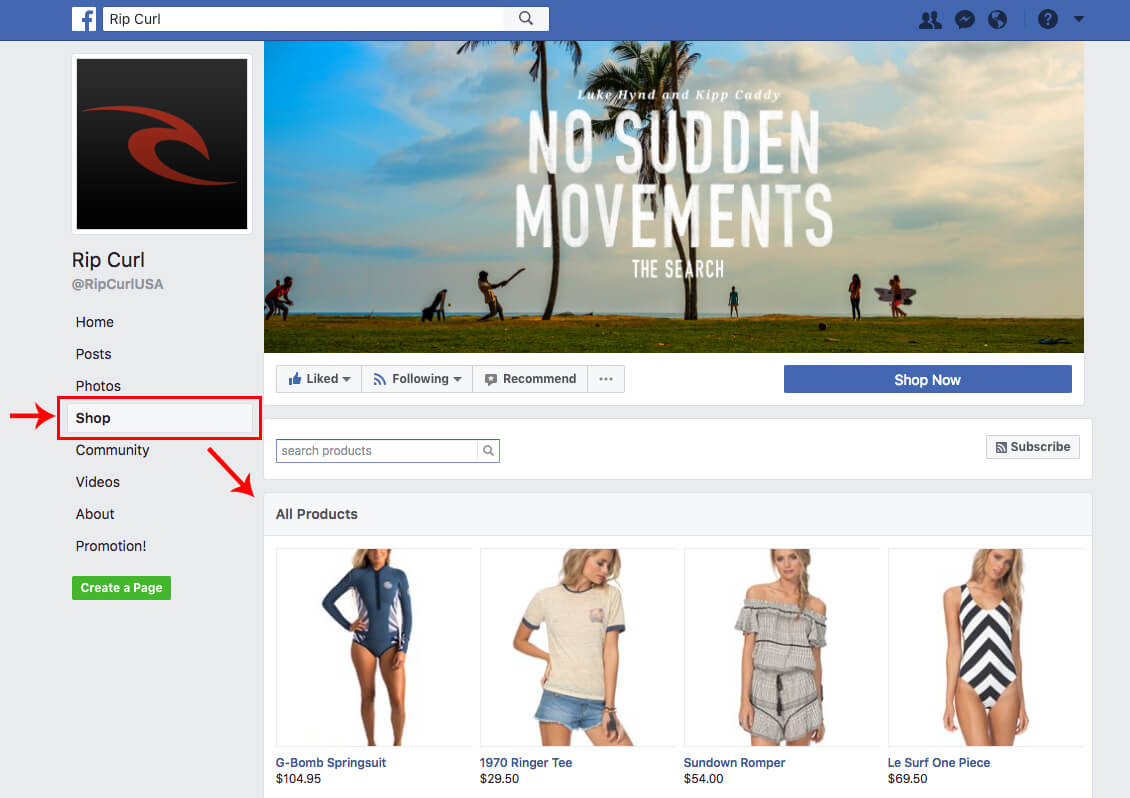

This free feature allows you to load individual products and then link them to their purchase page on your website.
But it gets better:
There are a number of ecommerce platforms that automatically connect all your website’s products to your Facebook store.
So easy, right!
[clickToTweet tweet=”No joke: the easiest way to generate sales on Facebook is through its Shop feature. #smm #smb” quote=”No joke: the easiest way to generate sales on Facebook is through its Shop feature.”]
Facebook took things up a notch through their partnership with Shopify. For a fee, you can join Shopify and link it with Facebook.
Once that’s done, customers can easily browse your products and collections using the Shop section on your Facebook Page.
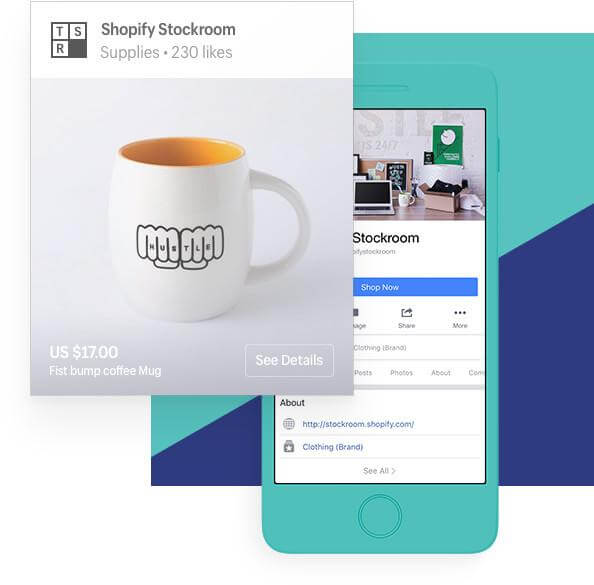

Customers are able to check out without ever leaving Facebook. Let that sink in for a second.
One stop shopping—literally.
Purchase information is totally secure, and customers can even choose to save their info for future purchases.
Cha-ching!
If that weren’t cool enough, you can even personalize the shopping experience with Messenger chat support. Customers can actually buy your products directly in a chat, and track their orders in real time.
I could just end this article right here, couldn’t I?
But the Shopify + Facebook union is only ONE of many social commerce trends you can leverage for success.
What if you don’t have products, and you can’t take advantage of that partnership?
Enter the “Take Action” Button. Atop every Facebook Business Page is a Take Action Button that you can (read: should) customize to best serve your customers.


Facebook even provides insights on the button’s activity that point you in the right direction for upcoming strategies and campaigns. Plus, you can change it’s function along with your changing campaigns.
Instagram for Social Commerce
One of the best social commerce trends to convert sales on Instagram is to use their in-app product tagging feature.
(This hasn’t been rolled out to the masses quite yet.)
If you don’t have this capability now, don’t worry, it’s coming very soon.
In short, Instagram now offers Business Profiles the ability to create an immersive shopping experience.
Their followers can shop and browse products from their favorite brands on their posts, and even discover new product/brands in the Explore section.


Businesses have the power to create and tag a post with products directly from their phone.
Once you’ve connected your catalog to your account, tagging a product is a one-step process, just like tagging a friend.
Instagram brings this feature to the table after a slew of apps nearly perfected the Insta-shopping experience. Like To Know It, Shopify and Snapppt have all been heavily used by Instagrammers looking to monetize their feed.
The reason those three will all soon be insta-obsolete:
None of them are as seamless as Instagram’s own in-app shopping experience.
It’s interesting, isn’t it?
Facebook partnered with Shopify to streamline their social commerce experience.
While Instagram created an in-platform feature.
Such social commerce trends lead us to believe that Facebook is using Instagram’s native shopping feature as a test…to see if they should invest in the functionality as well.
It’s odd to consider anything Instagram does as a “beta test” since it just passed 800M monthly active users. However, Instagram is much smaller than Facebook, so this assumption is totally feasible.
Another notable trend on Instagram is the introduction of linking within Stories.


Once you reach 10,000 followers, you’re able to direct them to a website from within your Insta-Story.
The “swipe up” option opens the link you enter when you publish an image or video on your daily story.
This feature goes well above and beyond simple “buy-now” commerce. Links can drive traffic to a new blog, a YouTube video, you name it.
Talk about community-building!
While it has a ways to go when it comes to social commerce trends, we’d be remiss not mentioning Snapchat.
Snapchat’s evolution thus far indicates that all signs point to ecommerce capabilities coming very soon.
SEE ALSO: The Ultimate Guide to Using Snapchat for Business in 2017
Pinterest for Social Commerce
2016 was a big year for social commerce because Pinterest entered the game with a vengeance.
After having long-been a significant source of revenue for online businesses—aka sending them web traffic with no kickback—Pinterest made a big statement.
Essentially, Pinterest evolved into an ecommerce platform.
They launched “Shopping with Pinterest” and their incredibly addicting “Buyable Pins” became so much better.
Users can shop on the app and on the website seamlessly. Items placed in your customer’s cart will follow them from device to device.
Now 68% of Pinterest users shop or find products on the social network.


What’s more, you can customize their shopping experience the same way you would on your website by:
- Highlighting popular products
- Featuring sale items
- Explaining shipping details
Before I go any farther, can I just say:
If you have a product to sell, we really hope you’re pinning the heck out of it.
Lastly, Pinterest states that consumers who see products on their website are twice as likely to buy it when they come across it in a store.
[clickToTweet tweet=”68% of Pinterest users shop or find products on the social network. #smm #marketing” quote=”Did you know: 68% of Pinterest users shop or find products on the social network!”]
How to Leverage Social Commerce Trends
Now that you know some of the ways you can generate social ecommerce on the different platforms, let’s dig into trends you can leverage to maximize your ROI.
1. The Power of Positive Reviews
Conversions increase 133% when mobile shoppers see positive reviews before buying.
Reviews have always been around, but the power of the social media review is undeniable.
Between the digital “word of mouth” impact and the organic SEO impact, reviews on social media are more important than ever.
A whopping 90% of consumers think reviews are more important than any information provided by a salesperson.
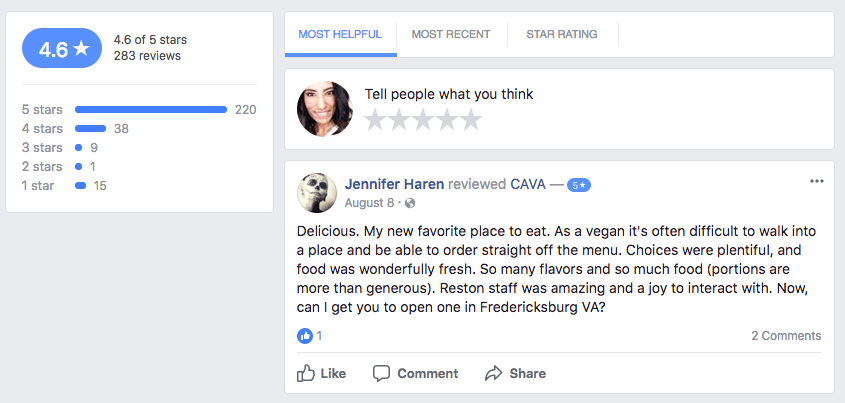

If that weren’t enough:
Most consumers say they trust these reviews as much as they do personal recommendations made by friends and family.
A large number of positive reviews on Facebook will bring your Business Page’s search result up.
This is reputation management at it’s finest!
Reviews are also a way to amplify your customer service on social media.
71% of consumers who have had a good social media service experience with a brand are likely to recommend it to others.
And if you aren’t making the most of this trend, you could be in trouble.
[clickToTweet tweet=”Conversions increase 133% when mobile shoppers see positive reviews before buying. #marketing ” quote=”Conversions increase 133% when mobile shoppers see positive reviews before buying.”]
And check this out:
4 out of 5 consumers reverse their purchase decisions based on negative reviews.
2. Collaboration with Influencers
Cultivating an ROI-based social media influencer network is proven to boost sales.
This is one of the hottest social commerce trends out there now.


It takes a lot of time and dedication to find, onboard and manage the right influencers for your brand.
However, once you’re able to perfect the process, linking up with influencers opens tons of creative doors!
Look at these factors when vetting an Influencer:
- What is their engagement-to-follower ratio?
- Are the people commenting real users or bots?
- Would they be willing to send you their “Story insights”?
- Are the people commenting also in that influencer’s industry?
For example: if 90% of a fashionista’s engagement are comments from other fashionistas, it’s likely they’re just in a POD and their reach is limited to a core group, regardless of the 25k followers, they may have.
Influencer campaigns done right are incredibly powerful.
[clickToTweet tweet=”Cultivating an ROI-based social media #influencer network is proven to boost sales #smm ” quote=”Cultivating an ROI-based social media influencer network is proven to boost sales.”]
Making them succeed relies on your willingness to:
- Do the legwork up front,
- Set clear partnership guidelines,
- Serve as a project manager,
- …and provide support.
SEE ALSO: How to Become an Influencer in a Changing Media Landscape
3. Make Video Your Best Asset
Video has absolutely obliterated every other content type on social media when it comes to user engagement.


A HubSpot report showed that social media users say they pay closest attention to videos—more than images, games, articles and podcasts.
Cisco says that online videos will account for more than 80% of all consumer internet traffic by 2020.
Whoa.
It’s important to note that social media users are consuming video, on average, for six seconds or less.
Therefore, you better be creating content that gets your whole point across real quick!
[clickToTweet tweet=”Online videos will account for more than 80% of all consumer internet traffic by 2020 #marketing” quote=”Online videos will account for more than 80% of all consumer internet traffic by 2020.”]
Instagram and Facebook both offer live video, video “stories” and native video options—a huge shift in 2016 & 2017 that proves video is definitely one of the bigger social commerce trends.
Did you know:
Over 8 billion videos (or 100 million hours) were watched on Facebook every day in 2016!
4. Retargeting for More Conversions
If I had a dollar for every time someone complained about being followed around the internet by a product they googled—I’d be retired.
That’s because retargeting data is more capable (aka annoyingly effective) than ever.
How is it a proven tactic that works? Take a quick look:


A potential customer visits your site but leaves without converting.
You create a retargeting campaign on social media to win them back.
As they later check their social media channels, you get their attention back with ads about the products they viewed before.
Boom! You convert a prospect into a customer.
Retargeting functionality is super robust and getting better every day.
Social commerce and retargeting are a match made in heaven.
Website visitors who are retargeted later are 70% more like to return and convert.
Retargeter.com states that 60% of online advertisers are using Facebook and Instagram for retargeting, and 38% are using Twitter.
The “Custom Audience” feature in Facebook is the simple key to retargeting your website visitors.
Remember this:
You can significantly increase the ROI on your retargeted ads by A/B splitting them.
[clickToTweet tweet=”Website visitors who are retargeted later are 70% more likely to return/convert #smm #marketing” quote=”Website visitors who are retargeted later are 70% more likely to return and convert.”]
5. Take Advantage of Buy-Now Features
Now, customers using social commerce benefit from user-friendly purchasing capabilities.
The impulse buy was always slightly out of reach in the social commerce trends space until recently.
It’s imperative businesses utilize each platforms’ new, evolving shop features to maximize on their community’s consumer impulses.
In 2016, 51% of Millennials would be likely to make a purchase over social media vs. 36% of Gen Xers vs. 14% of Baby Boomers.
And get this:
93% of Pinterest users engage the platform to plan or make purchases. Talk about a “buy now bliss”!
It’s a fact that people are more likely to make an impulse purchase online.
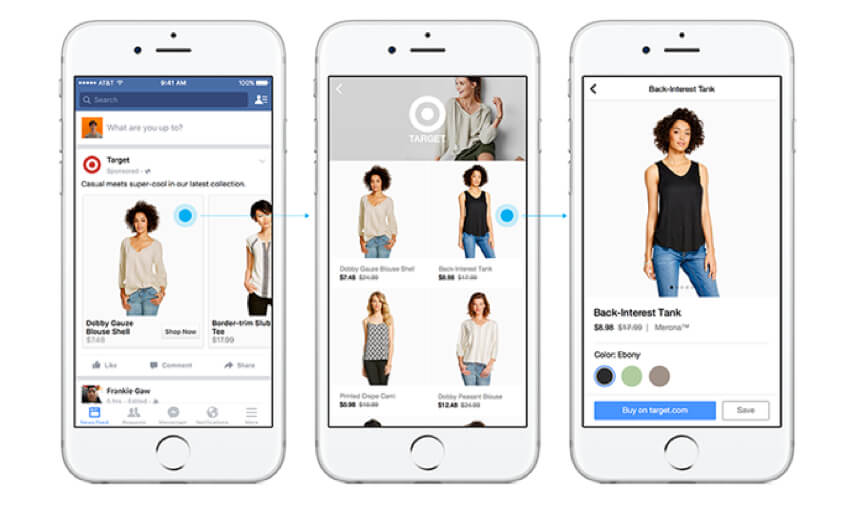

48% of online shoppers have bought or spent more than planned when shopping online.
Most noteworthy, is to remember that social media is used to it’s full potential when brands are able to develop relationships with their audience.
Social media is unlike any other medium.
It is the only B2C platform that truly allows businesses to nurture their relationship with customers 24/7.
Put simply, it’s those relationships that are leveraged into sales.
[clickToTweet tweet=”93% of Pinterest users engage the platform to plan or make purchases. #smm #smallbiz” quote=”93% of Pinterest users engage the platform to plan or make purchases.”]
The way brands engage with their community is the key to success with any of the social commerce trends.
In addition, smart brands know to maximize each platform’s capabilities based on their foundational function—their social function.
The very best brands on social media are adept at building customer loyalty (recurring sales) through what feels like personal relationships.
Leveraging social media for maximum ROI will always come down to engagement.
Place great ads.
Run the most exciting sales.
Hire the best influencers.
…But here’s the kicker:
If you aren’t engaging with users (for example, replying to comments on your ads), you’re missing the mark.
[clickToTweet tweet=”Leveraging social media for maximum ROI will always come down to engagement. #smm #socialmedia” quote=”Leveraging social media for maximum ROI will always come down to engagement.”]
Conclusion
So, now you know that social commerce equates to sales generated through a social media channel.
You also know there are some pretty motivating social commerce stats out there.
30% of online shoppers say they would be likely to make a purchase from a social media network.
This all serves to prove that social media marketing is a train headed straight to increasing your company’s revenue.
You better be on that train.
Leveraging social media commerce trends to convert sales can be done in a number of ways:
- Generating positive reviews for digital “word of mouth” and SEO purposes
- Building a strong influencer network and engaging with their communities
- Creating relevant video content with the important stuff at the beginning
- Utilizing retargeting capabilities so users never stop seeing you
- Streamlining the “Buy-Now” experience via in-platform shops
And while all of the above ways are relevant strategies, none will generate maximum ROI if you aren’t also engaging consistently with your community.
All aboard!
[clickToTweet tweet=”30% of online shoppers say they would be likely to make a purchase from a #socialmedia network.” quote=”30% of online shoppers say they would be likely to make a purchase from a social media network.”]
How will you leverage social commerce trends with your marketing next year?
Share with us in the comments below!



BONUS: Learn how to use social media for converting leads to sales with the art of social commerce. Download Our Guide Now!

